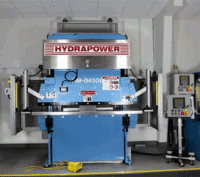Whether you work at a computer, installing ceiling tiles, butchering meat, or on an assembly line, your job likely requires you to perform the same task or movement over and over again - which could put you at risk of developing a repetitive strain injury (RSI).
RSI is a general term used to describe a variety of painful injuries that affect tendons, tendon sheaths, muscles, nerves, joints, and other soft tissues. They cause persistent or recurring pain most commonly in the neck, shoulders, forearms, hands, wrists, elbows, and lower limbs.
RSI are a serious workplace health concern causing pain and suffering for many workers. These injuries place economic burdens on society in lost productivity, compensation costs, and healthcare costs. According to Stats Can, in 2000/2001, over two million Canadians had a repetitive strain injury serious enough to limit their normal activities, and 55% of these injuries were caused by work-related activities.
SYMPTOMS
Pain is the most common symptom associated with RSI. Symptoms may vary but often include joint stiffness, muscle tightness, redness and swelling of the affected area. Some workers may also experience sensations of "pins and needles," numbness, skin colour changes, and decreased sweating of the hands. The symptoms of RSI usually develop gradually and the injury may progress in stages ranging from mild to severe, eventually causing longer periods of pain. Eventually, without treatment, the symptoms can become constant and affect your ability to perform your job or even light duties. At this stage the condition may be irreversible.
Not everyone goes through these stages in the same way, however the first feeling of pain is a signal that the muscles and tendons should rest and recover. Otherwise, an injury can become longstanding, and sometimes, irreversible. The earlier people recognize symptoms, the quicker they should respond to them.
CAUSES
Gripping, holding, bending, twisting, clenching, and reaching - these ordinary movements that we naturally make every day are not particularly harmful in the activities of our daily lives. What does make them hazardous in work situations though, is the continual repetition of the movements (e.g., using a computer mouse, cutting meat, or working on a production line). And there are other work factors that may contribute to injuries, such as awkward postures and fixed body positions, excessive force concentrated on small parts of the body such as the hand or wrist, and a fast pace of work with insufficient breaks or recovery time.
It is not clear why some people develop RSI and others who do the same work do not. Some research suggests that psychosocial workplace factors (e.g., stress at work) can also contribute to RSI, increasing muscle tension and/or affecting how the body feels pain. Each of these factors alone may not cause injury, however a combination of factors and the interaction among them can cause RSI.
PREVENTION
As with any hazards, RSI are best eliminated at the source which, in this case, is the repetition of the tasks performed. Prevention of these injuries should focus on eliminating repetitive work through job design which may involve mechanizing certain tasks. In addition, jobs should be structured so that workers can rotate between various tasks where they do something completely different, using different muscles groups.
When it is not practical to eliminate the repetitive aspect of a job, a well-designed workstation that is adjusted to fit the worker's body size and shape can help. Workstations should be fully adjustable and enable a worker to work in standing, sitting, or sitting-standing positions.
Workers should be provided with appropriate, carefully maintained tools and equipment to reduce the force needed to complete tasks and prevent muscle strain. Providing equipment to help with tasks that require holding elements (e.g. vises and clamps for woodworking and machining) can save workers from exerting a great deal of muscular effort in awkward positions.
Because RSIs develop slowly, workers should be trained to understand what causes these injuries, how best to prevent them, and how to recognize the early signs and symptoms of RSI. Workers need to know how to adjust workstations to fit their tasks and individual needs. Besides providing training, employers should encourage employees to take short, frequent rest breaks to allow their muscles to relax, and to consciously control muscle tension throughout the work shift.
It is important to note that many RSI cases resolve themselves once the source of the worker's RSI is eliminated. However if nothing is done to address the injury or remove its cause, the damage could become permanent. In general, the longer someone experiences the symptoms of the RSI before eliminating the problem-causing activity, the higher the risk of developing a more treatment-resistant condition.
And lastly, keep in mind that prevention and control measures are more likely to be effective if they have been established with the participation of both employees and employers.
RESOURCES
Here are some resources to help raise awareness of, and address, RSI:
• RSI Awareness Day free poster download
• CCOHS Ergonomics & MSDs key topic page
• OSH Answers fact sheet on work-related musculoskeletal disorders
• Office Ergonomics Safety Guide, CCOHS
• MSD Tool Kit, Occupational Health and Safety Council of Ontario
• Musculoskeletal Disorders (MSD) Prevention Manual, CCOHS
• MusculoSkeletal Disorders (MSDs): Awareness free e-course, CCOHS
• MusculoSkeletal Disorders (MSDs): Prevention e-course, CCOHS
• Position for Safety and Comfort poster
Source: Canadian Centre for Occupational Health and Safety www.ccohs.ca


